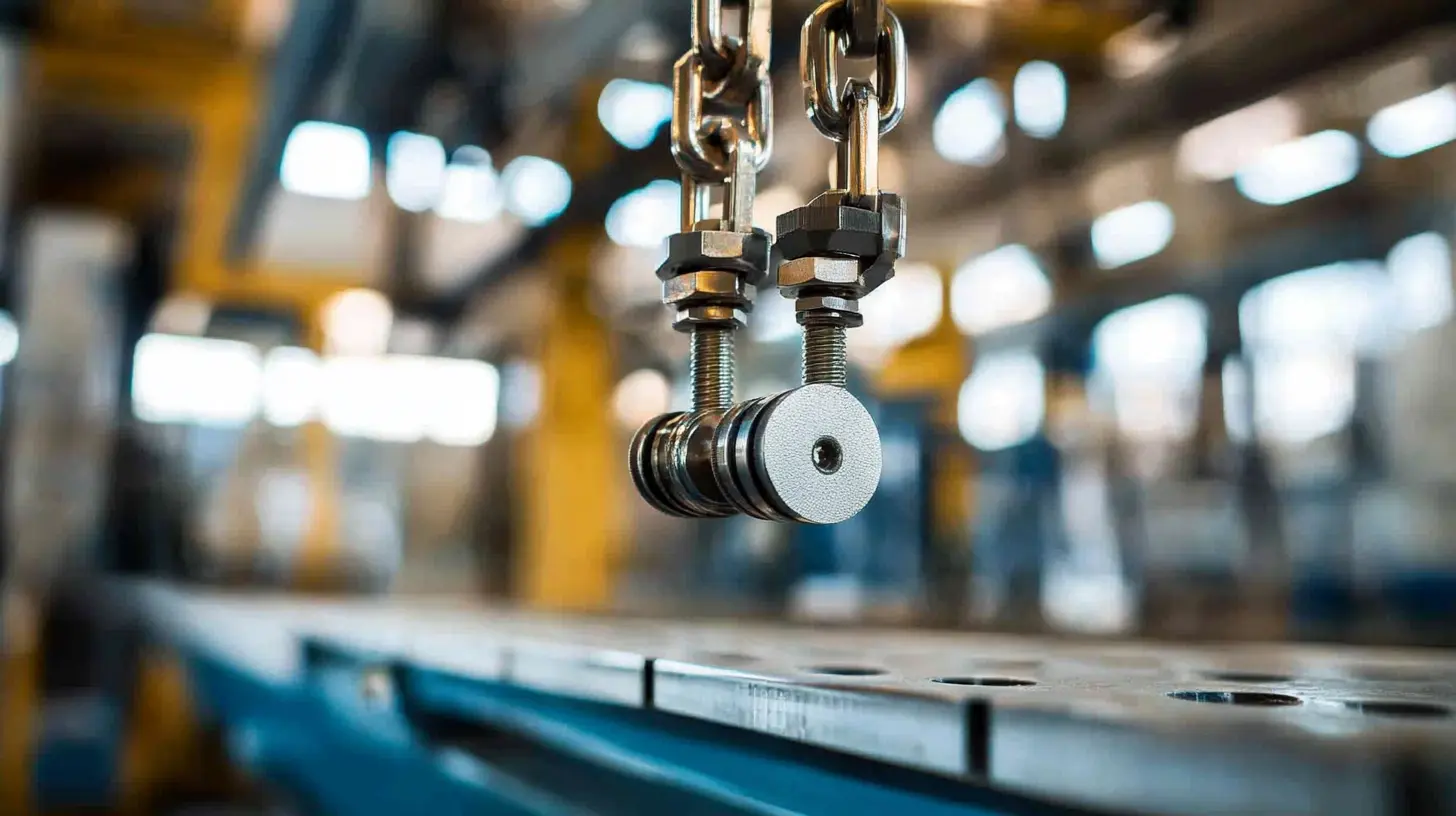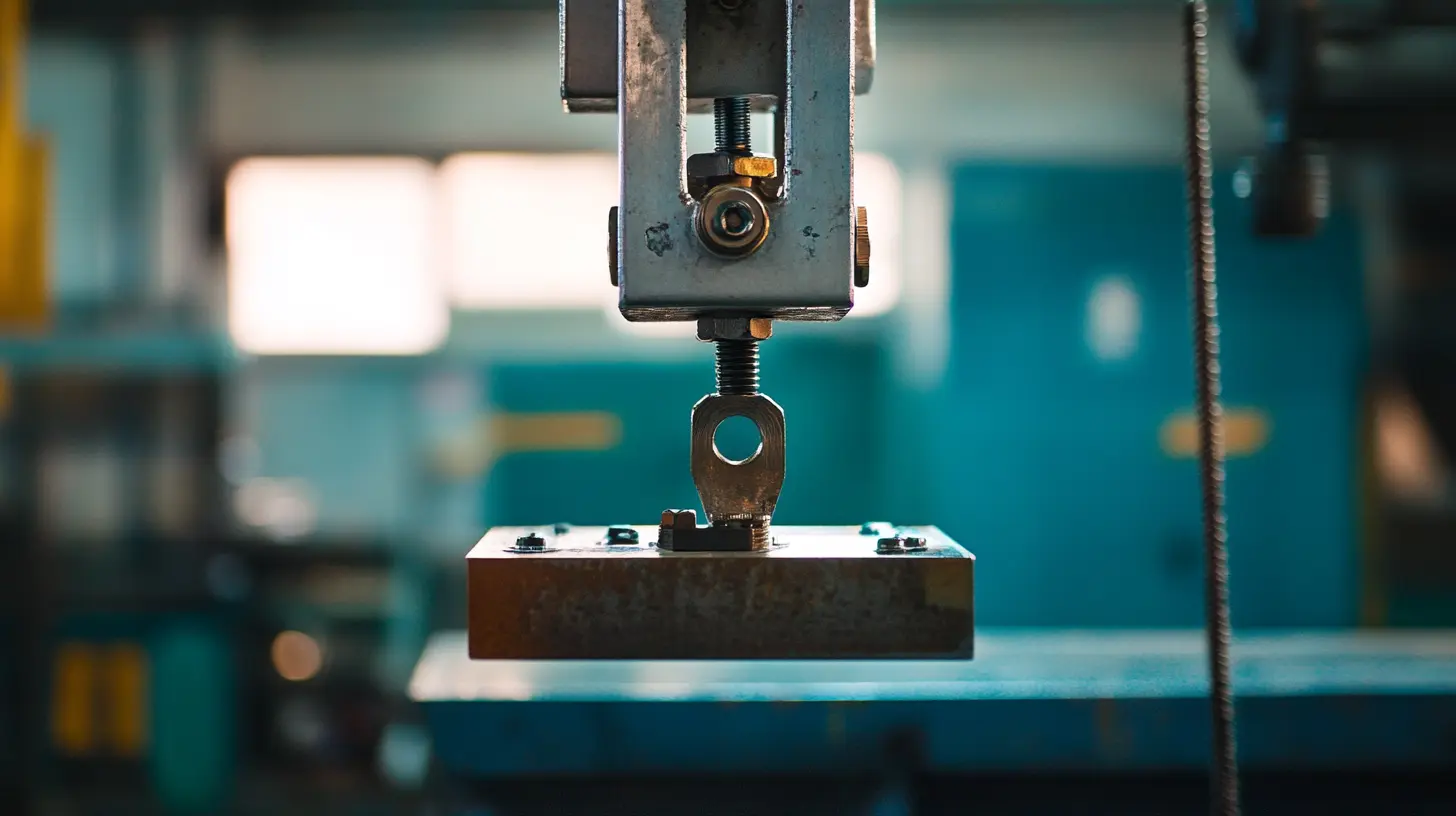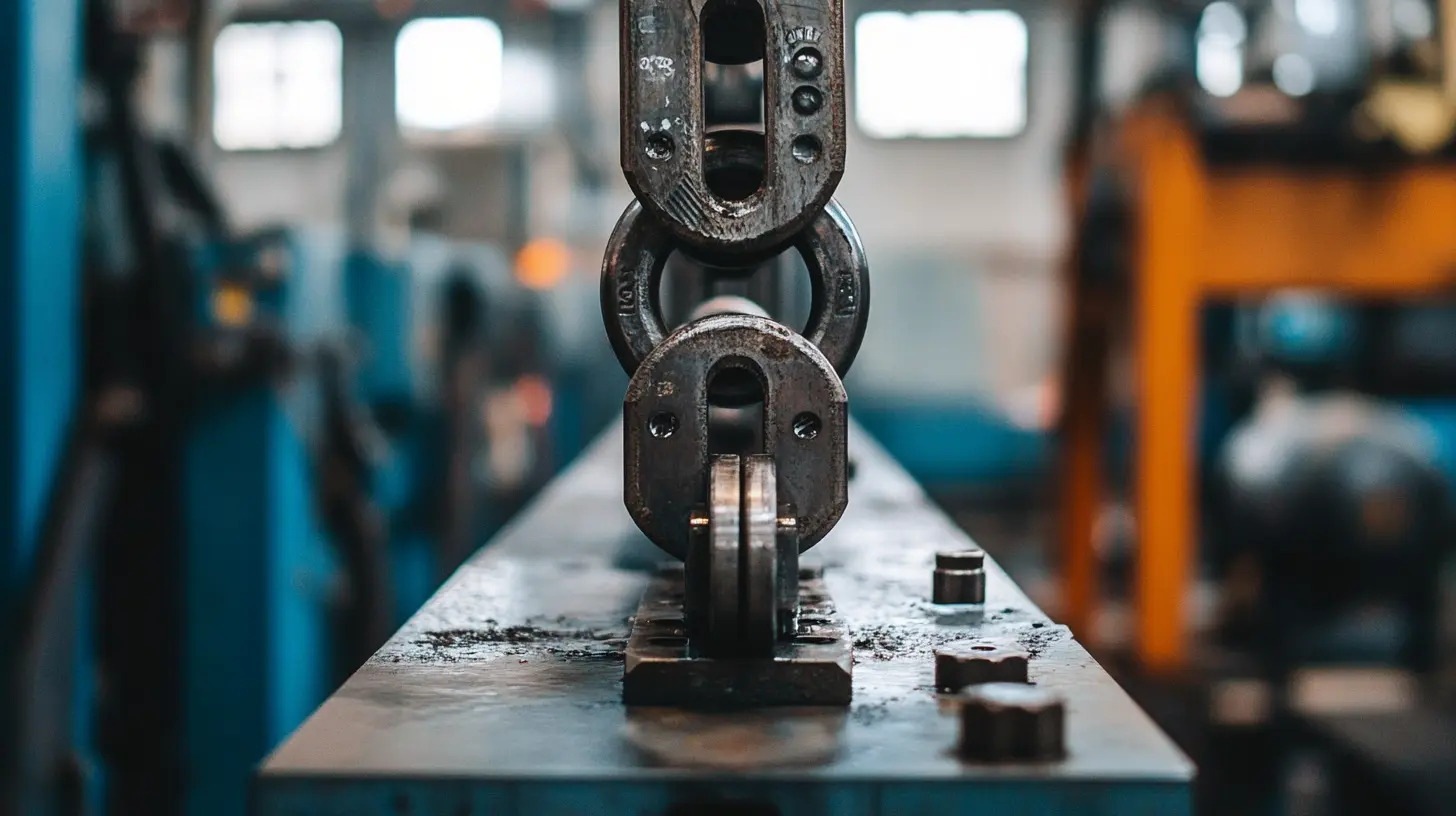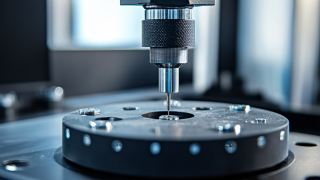 info@loadcellsensor.com
info@loadcellsensor.com 
-
Home
-
Products
-
News
-
About Us
-
Contact Us
Leave Your Message
-
 CONTACT LCS TECH
CONTACT LCS TECH -
 CONTACT LCS TECH
CONTACT LCS TECH



There is a high requirement for precision measurement tools as industrialization today changes quickly. Small Load Cells are small yet reliable devices to play a vital role in various applications such as the manufacturing, aerospace, and automotive sectors. There is a report by Markets and Markets regarding the global load cell market forecasting it will be around USD 2.1 billion by 2025 since the demand for weighing and force measurement solutions continues. This growth is an endorsement for the fact that the Small Load Cells will continue being a major enabler of operational efficiency and product quality.
At LCSTech Co., Ltd., we have been there in the frontline of this booming market since 2012, supplying high-end load cells to more than 40 countries with expertise in advanced strain gauge technology. As a proud advocate of the "Made in China" standard, we have a good understanding of the ins-and-outs involved in the sourcing of Small Load Cells meeting very high-quality and performance expectation criteria. This blog intends to reveal the secrets to the successful sourcing of these paramount components that help ensure that companies survive in an extremely competitive environment while maintaining the standards of accuracy and reliability in their operations.

By controlling small load cells, the really important linkers for precise weight measurements came into the limelight in an increasing number of modern applications, such as manufacturing, aerospace, and health industries. These devices allow quality control to be carried out and operational efficiency to be attained by producing a data-driven decision-making process. Recently, MarketsandMarkets reported that the global load cell market is anticipated to grow from $3.42 billion in 2020 to $4.91 billion by 2025, at a CAGR (compound annual growth rate) of 7.5%. This growth is a testimony toward how important small load cells are in terms of giving their share toward technology and automation. With small load cells, working together with technologies such as neural processing units, the advances in performance for applications like robotics and smart manufacturing can open up entirely new areas of application. NPUs are known to perform complex calculations with higher efficiency than standard processors, and their ability offers the computational power needed to analyze small load cell data in practically real time. This further allows the measurement to be done fast and accurately for improving the reliability of the product, directly influencing operational efficiency. As industries flow into intelligent systems, the prominence of acquiring small load cells of premium quality becomes clearer, establishing an avenue for innovation and better methodology. Beyond this, industries are in pursuit of optimizing their processes, thereby increasing the demand for precision measurement instruments. When it comes to the trend towards IoT integration, small load cells should be not only accurate but also highly compatible with various wireless technologies. A well-sourced small load cell can greatly contribute to operational success by providing stable and reliable data into machine learning algorithms and AI systems, thus propagating efficiency to unprecedented levels. Simply put, investing in high-quality small load cells is no longer a privilege but an obligation for businesses out to succeed in this technology-driven world.

The premium small load cells obtainable for sale should be focused on key characteristics pertaining to accuracy, durability, and application compatibility. The first consideration should then be given to the load cells' precision and measurement range. In general, premium load cells are highly accurate with a wide range of measurement capacities, addressing a range of weights. This becomes very disadvantageous for those applications where even the slightest discrepancy is capable of causing grave errors in data reporting or product quality control.
The second basic feature is the material used to build the load cell. Obviously, high-end load cells use either stainless steel or aluminum as constructional materials. Not only are these materials very competent for load cell construction with respect to strength and stiff?ness, but they also confer extra resistance against environmental conditions such as moisture, dust, and chemical composition. Here, durability is an important factor, especially in industries where environments are tough for load cell applications. Also, check for any IP ratings related to ingress against dust and water.
The last important consideration is compatibility with existing systems. A premium load cell should easily integrate into your measurement systems with communication protocols such as RS232, RS485, or USB. Since integration is easy, data can be collected and analyzed more efficiently for wise business decisions. By considering these features: precision, construction quality, and connectivity, you will be in a position to make sound executive decisions affecting your operational needs and your business's performance generally.

When you are searching for high quality micro load cell supplier for your company, you really need to find a reliable source so that your source is sure of quality and performance. Yet, there are different roles played by small load cells. Size, industrial automation, robotics, and even medical applications such as ranges of micro loads feature all be fed into the load cell. Going by the recent industry report, the market size of load cells at the global level is going to cross USD 5.2 billion until 2027, purely based on the demand for accurate measurement across different applications.
The evaluation of certifications and adherence to industry standards is very important when searching for trustworthy suppliers. Companies with ISO 9001 certification are particularly important in the search for suppliers, as it asserts their reliability in quality management systems. Reviews and case studies from similar companies would help in assessing the reliability in product performance. For instance, a supplier affiliated with famous manufacturers in the sector of robotics proves to be reputable in high performance load cells capable of handling harsh conditions since their application is fairly advanced.
Besides quality checking, technological aspect evaluation should also be done to different suppliers. New generation micrometric load cells are part and parcel of humanoid robotics. Its design has to cater to very close contact between the load cell and the environment. Fortunately, mostly cutting-edge technology enhances accuracy and responsiveness in load cells to guarantee that your application will be fit for today and tomorrow's demand. Because of technological improvements in robotics, the demand for precision sensors will continue to grow, thereby creating a great opportunity for suppliers who can also develop in line with industry trends.

A load cell is one of the pertinent units for weighing anything at work or at home. The figures that come with the load cell should, therefore, be carefully checked because they will be used to determine the performance of small load cells. Reports from Markets and Markets say that the global load cell market will reach $1.4 billion by 2026 and will grow at a 4.7% CAGR from 2021 to 2026. This accentuates precision measurement technology reliance across sectors.
Performance specification remains important considerations when choosing a load cell. The performance specifications have an effect on the load cell's use; a load cell that is highly accurate would supply precision within 0.01% of full scale output, making it essential for applications that require highly accurate measurements. High capacity load cells, usually found in ranges of a few grams to several tons, are capable of measuring varying weights. Sensitivity, commonly expressed in units of millivolts per volt (mV/V), is the other thing the load cell would be selected based on: this is because a lower mV/V has its corresponding wavelength far more sensitive, the best possible performance usually rated around 0.5 mV/V.
Likewise, the material from which a load cell is made and the environmental rating goes a long way toward durability and reliability of load cells. For instance, a stainless steel load cell ideally works well under harsh environmental conditions, since it is resistant to corrosion, whereas an IP67 rating safeguards against dust and water ingress. These specifications serve to enhance the lifetime of the load cell investment. For example, many businesses are investing in better measurement technology; such that an understanding of performance specification would come in handy during sourcing and improve their efficiencies in the long run.
When it comes to procuring quality small load cells for your company, understanding certification and standard requirements is just as important. These factors ascertain the load cells' reliability and accuracy while also helping to build trust with consumers and affiliates. Different load cells used in different applications must conform to specific standards so as to guarantee their performance in an environment that meets the stresses and requirements of its intention.
Certification of load cells per ISO, ASTM, and other standards related to the sector indicates that a load cell has gone through strict testing and meets defined benchmarks for performance. Choosing certified load cells can very much minimize risks of measurement errors and application failures in facilitation of the smooth flow of business operations. Industry recognition and standard compliance can also prove to be a powerful selling point for credibility.
Furthermore, studies and updates on load cell technology standards should be kept current. Technology increases are a good reason for change in best practices and require other companies to acquire new or advanced certifications for improved functionality or safety measures. As a result, when ultimately deciding on which load cells to purchase, offer preference to those types that not only conform with but also are certified by acknowledged authorities as smoothly fitting into your operational system.
In investing for tiny load cells, a business is confronted with a crucial balancing act: price versus quality. A load cell is an important part of many applications, from medical to industrial, and reliability is key. Markets and Markets reports that the global load cell market is projected to reach $4.57 billion by 2025, growing at a CAGR of 5.3%. Such growth in the market means that the importance of a correctly chosen load cell, which balances budget constraints with higher operational efficiency, can never be overemphasized.
There is also the misconception that purchasing the cheapest load cell options would provide savings. But as stated in the Journal of Industrial Automation, lower-priced models can fall short in precision and accuracy as well as in durability, thus leading to failures and replacements, which incur hidden costs. Inaccurate measurements may cause losses in production, which can amount to 20%, thus establishing the need for quality over price when it comes to load cells.
Striking this balance requires thorough research and a comprehension of the specificities of the needs of the application. For example, a load cell with better temperature stability and longer life may be key in environments subject to high fluctuations. The higher initial investment could thus justify itself with lower total ownership costs that consider maintenance, replacement, and operational downtimes. Therefore, companies must have a strategy to sourcing the load cells, taking the time to consider both immediate costs and long-term advantages to build a sound case for investment.
Small load cells are applied across several applications and industries, and their precision and reliability play an important role in guarantee accurate measurements. For instance, in agriculture, small load cells are now gaining increasing acceptance in weighing crops and livestock. Accurate weighing can increase productivity by up to 15%, according to the International Society of Agricultural Engineers, which shows how important these devices are in ensuring operational efficiency.
In manufacturing quality control, small load cells are actually a necessity. The global load cell market is estimated to grow at a CAGR of 4.5% from 2021 to 2028, which serves as an indicator of the increasing adoption of advanced weighing technology. Real-time monitoring is facilitated by tiny load cells during assembly and packaging, ensuring that products being manufactured meet the standards outlined in the respective industry. This capability reduces waste and ultimately enhances customer satisfaction through product consistency.
Moreover, the healthcare and medical sector also benefits from these small load cells, which include various applications, including patient monitoring and calibration of medical devices. According to the report from Research and Markets, the demand for accurate and reliable measurements during patient care would highly drive this market, and medical load cells are expected to grow at a tremendous pace. These load cells integrate easily into devices, providing essential data, which greatly aids during crucial medical decision-making processes.
As industries continue to evolve and the requirement for precision increases, small load cells will further expand in versatility and applications, thus earning the reputation of being an instrument of necessity.
In industrial practice, the constant operational and good performance life of load cells is imperative to ensure the operations of such industries run very efficiently. Load cells are the unsung heroes of a lot of systems within our societies. Their operations should always be keenly monitored, as faults in their operation can lead to extremely costly downtime for most companies that use them. It is imperative for regular maintenance regimes to include clean working ambient, scheduled calibration by way of checks, and the safeguarding of these load cells from ambient-environment factors such as moisture and extreme temperatures. According to the latest industry report, an organized maintenance schedule can increase the life of load cells as much as 50% with concomitantly reduced costs of replacement and impressive reliability in data collection.
With the augmentation of very sophisticated technologies in most industries-much akin to the developing capabilities of dexterous hands in robotics-there is an even greater need for load cells with very high precision. These systems are anticipated to take high lifting ability and repetitive use, superseding most present general specifications of load cells. Furthermore, recent innovations show that by using advanced sensors, integrated feedback and calibration can lead to improved levels of accuracy and efficiency. The increased demand for such components requires matching load cells with the application and conditioning for intense use.
Thus, well-maintained, expensive, small size load cells can create a winning difference. With a good grasp of how load cells work and what their maintenance neglect means, one can shield oneself from surprises and ensure operations are running at optimal efficiency. New developments in load cell technology form part of a larger whole in smart manufacturing evolution, making the selection of the right load cell highly important as industries continue to adapt to more demanding standards and complexity.
When selecting a premium load cell, consider its precision and measurement range. Premium load cells usually offer high precision and a wide range of measurement capacities to accommodate various weight requirements.
High-quality load cells are typically made from stainless steel or aluminum, which provide structural integrity and enhance resistance to environmental factors such as moisture, dust, and chemicals.
The construction quality of a load cell is vital because it ensures durability and reliability, especially in industrial settings where load cells may be exposed to harsh conditions.
You can check the IP ratings of a load cell, which indicate its level of protection against dust and water ingress, ensuring it can withstand environmental challenges.
A premium load cell should support various communication protocols such as RS232, RS485, or USB for seamless integration with existing measurement systems, facilitating efficient data collection and analysis.
To assess suppliers, look for certifications such as ISO 9001, read reviews and case studies, and evaluate their partnerships with reputable manufacturers in relevant sectors.
The technological capabilities of suppliers are crucial, as innovative small load cells are necessary for advanced applications in robotics, and suppliers should be able to provide load cells that enhance precision and responsiveness.
It is important to choose suppliers who stay current with industry trends because advancements in technology, particularly in sectors like robotics, emphasize the need for precision sensors that can meet evolving demands.




